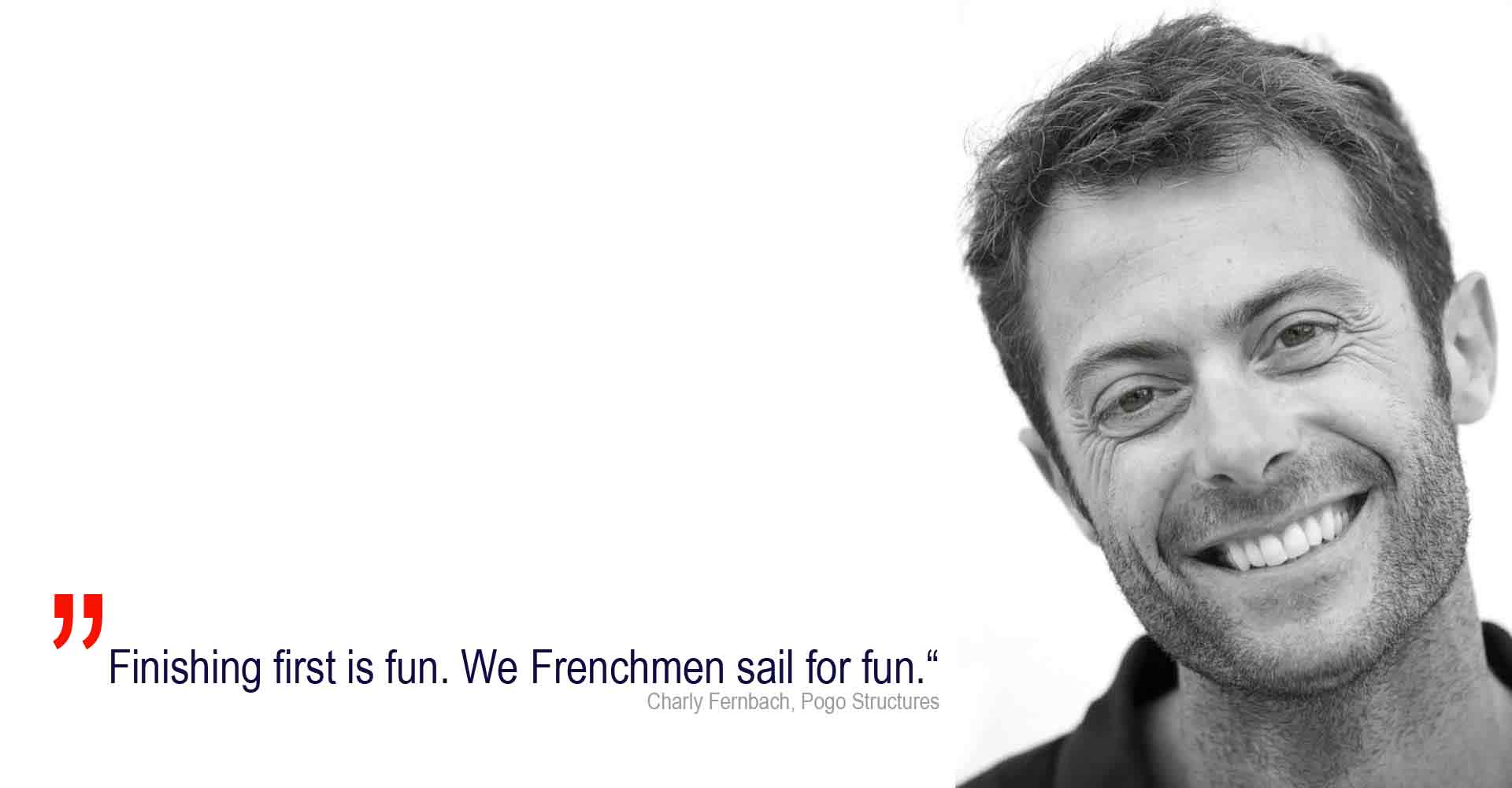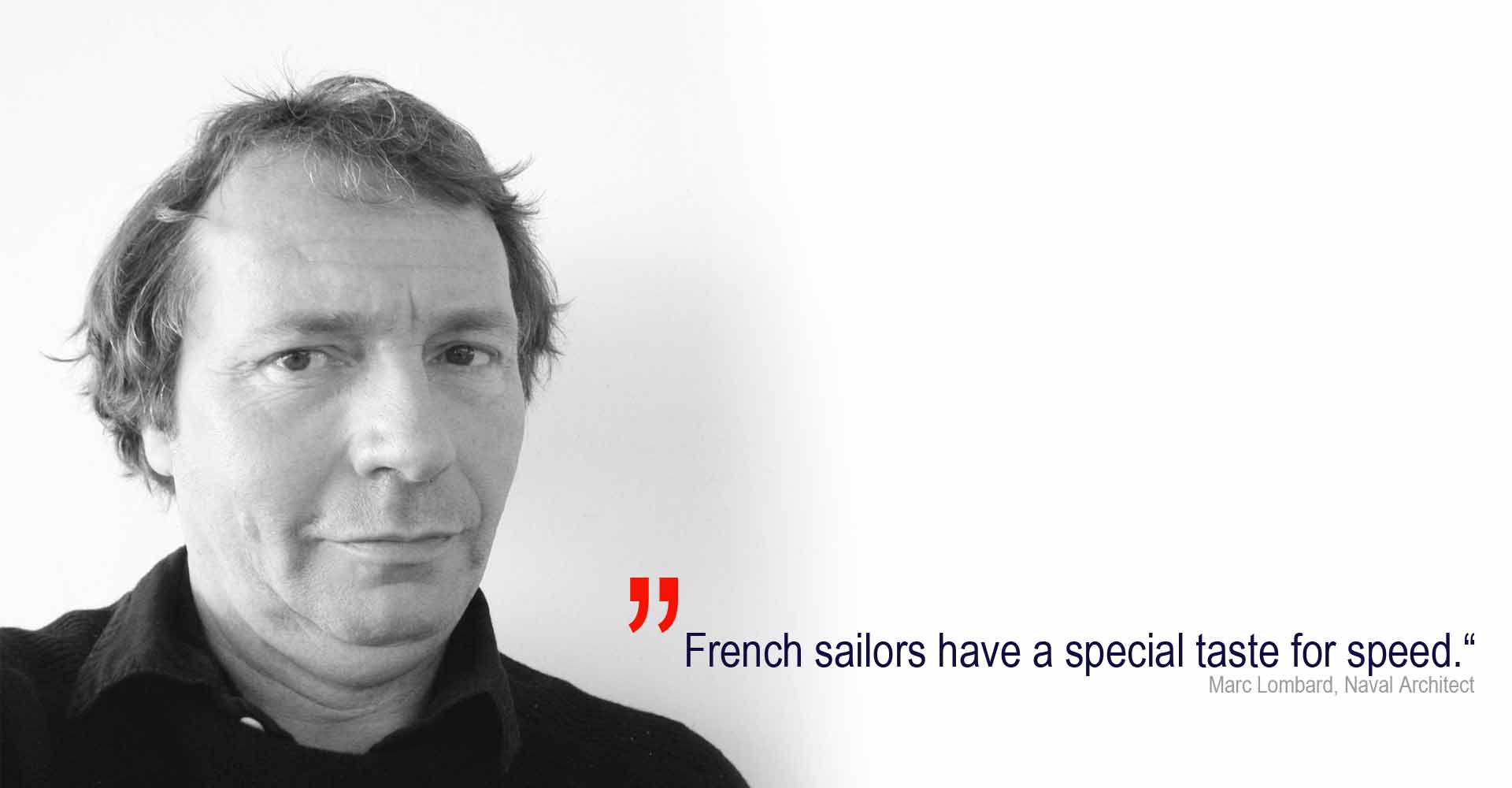I often wonder why it seems that certain yachts of certain brands tend to have a certain – very own distinct – style or character. As being busy reading everything I can grab about yachts, boatbuilding and sailing I raised the question whether the area is attached to style. Could it be true that a Scandinavian built boat is different from a boat that has her origins in the Mediterranean? I tried to seek an answer some 4 weeks ago when I´ve had the pleasure to talk to Niels Jeppesen of X-Yachts, Magnus Rassy of Hallberg-Rassy and Nicolai Sehested, a young Danish pro-sailor – which can be read here. For this article I am pleased to have the well known French naval architect Monsieur Marc Lombard and experienced sailor Charly Fernbach, Sales Manager of Chantier Naval Structures talking the French approach to sailing and building yachts.
„The Sea is one of the last Places where you can create your own Road.“
NO FRILLS SAILING.com: Marc, Charly, Mercie bien that you´ve spared some of your precious time to have my questions answered. As you may know, I have already tried to get a glimpse of a boatbuilder´s perspective on this topic by interviewing your Swedish and Danish colleagues Niels and Magnus. What became evident was that both have been sailing since their youngest ages, what about you two?
Marc Lombard: I started sailing at the age of nine by taking my father´s Dinghy out to the water. I loved sailing so I went to an offshore sailing school where I became the youngest ever skipper. I can remember my first big adventure by sailing around Europe.
Charly Fernbach: I am sailing since earliest childhood too, but did learn it on catamarans and land-gliders. I quickly became addicted to speed, fast acceleration and was seeking techniques to squeeze out every tenth of a knot from the winds.
NFS.com: What´s the fascination of the seas and sailing in particular all about? And how, when and why did you decide to have your professional careers in boatbuilding?
Marc: Well, you see, I was fascinated by boats, their shapes and styles and was very interested in boat design since I can think. Sailing alone in my spare time was fun, but I felt I wanted to do more. So after finishing secondary school I went to a small boatyard in La Rochelle to learn how to build yachts. It was a traditional yard and I learned a lot about naval architecture. Fostering my skills by learning more and more, amongst other things I went to England to study naval architecture there, I started offshore regatta-racing and earned money by delivering yachts.
Charly: I love the fact that sailing, the sport, the boats, are always evolving, there are always new things to learn, new designs and techniques to look at. Sailing is a form of art, it improves the way we utilize our body to read sensations on skin, the smell of wind and water, to find ways of balancing our bodies. Sailing is a unique connection to Mother Nature whilst long distance sailing is a window to the world, a special world with special rules. It´s one of the rare occasions where you can create your own road and live a life of adventure.
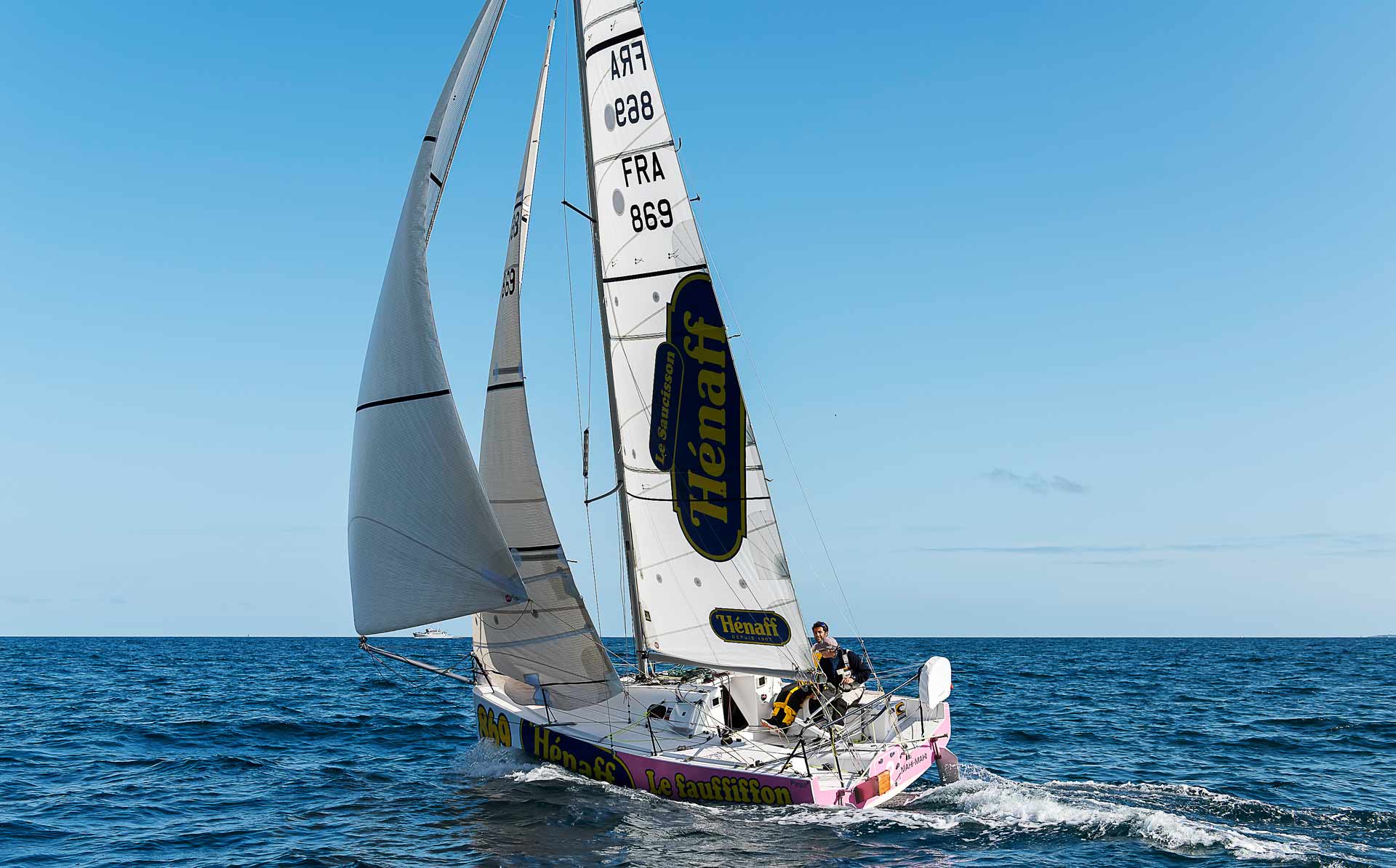
Marc: I never stopped sailing because I love this sport in all its aspects. What makes me sailing is the exceptional relationship with nature and the simple way of life that a sailingboat induces. I also like playing with the wind. Nowadays I often cruise with my family and friends but I occasionally keep on racing some regattas where I can put my own designs on trial.
“Moitessier and Taberly influenced a whole Nation.”
NFS.com: Why is France so obsessed with sailing and what makes your country one of the leading nations when it comes to regatta sailing and building especially fast ships, like the fantastic Pogo 12.50?
Charly: I think sailing is part of our culture here in France. That´s maybe a bit different from other countries in the world. And unlike other major sailing nations, in France I would say it´s due to iconic people with extraordinary stories which have lead practice and culture of sailing. I would say that in France we do have a split scene of sailing: On the one hand you have a very strong offshore regatta scene, on the other hand sailing is a really huge popular spare time activity for ordinary people here in France. Eric Taberly is a French hero and his accomplishments have inspired and in a way lead to the development of a high-tech-oriented offshore-racing community. Whilst national hero Bernard Moitessier taught our nation of the adventures, the beauty, a clean and simple life and the adventure of discovering the world – and oneself – by boat. Isn´t that a bit bi-polar? I would agree: You can observe this split when looking at French built boats. Very high-tech latest technology offshore racers in contrast to huge numbers of industrially manufactured cruising boats.
Marc: I can totally agree with Charly: I too believe that some French sailors did have a very big influence on our national sailing world. The books of Moitessier “La Longue Route / The Long Way” and “Damien” by Jerard Janichon and Jerome Poncet did influence a whole generation – which was perfectly corresponding to the general mainstream of the young generation of ´68 looking for new models of living their lives. Moitessier, in sailing around the world singlehanded, leaving the sure victory to another contender to carry on sailing for finding inner balance and continue his internal research for the meaning of life and peace of mind offered exactly that model. And on the totally opposite side, Eric Taberly in winning the OSTAR race did have a major impact on the sailing community as well. He was the first ever Frenchman to beat the English dominated sailing world on the seas after centuries of British dominance which has been also pushed by French media. In a way, Taberly is to France what Admiral Lord Nelson is to the English.
NFS.com: So it have been truly remarkable sailors and their adventures that sparked modern day sailing approach in France?
Marc: Partially, yes. More seriously, I would say that since the early Sixties we´ve had great naval architects here in France who made yachting possible and affordable to a greater number of people, ordinary people too. By using new materials such as cheap plywood and later glass-reinforced fiber it became possible to enjoy sailing not only for rich people. That was the true opposite to other nations where yachting was and kind of still is a sport for the wealthy and is considered an activity for the so called high society.
Charly: And then GRP really did change everything …
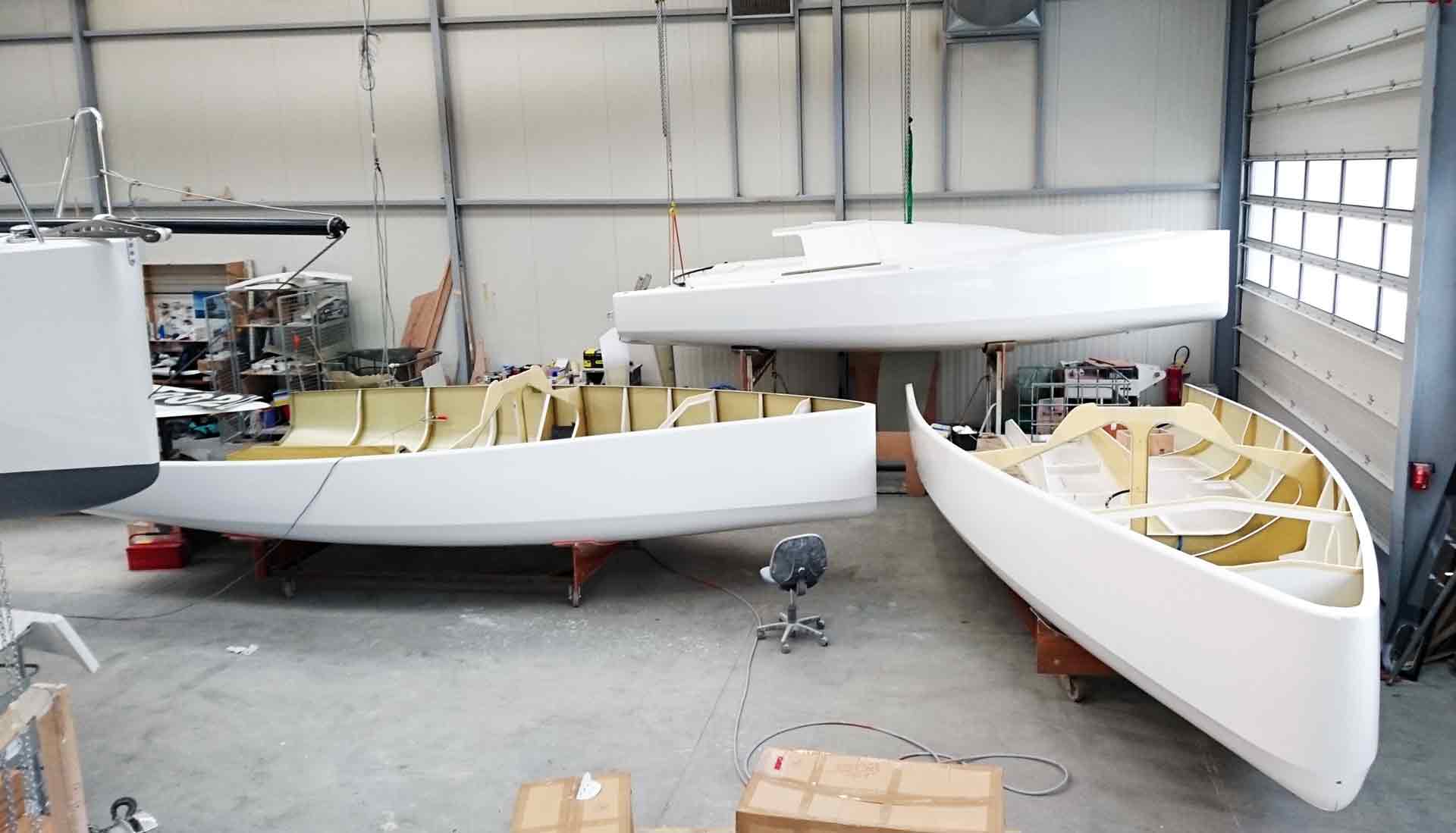
Marc: … exactly! GRP makes boats even more affordable. Huge companies like Beneteau and Jeanneau started producing boats on an industrial scale and thus accelerated sailing on a broader view here in France and worldwide at last. Then after 1976 with Taberly winning the OSTAR race our nation was crazy about short- and single-handed sailing and racing in particular. Races like the Route du Rhum with extra media coverage sparked a fire of passion that still burns today. And not to forget our geography: France offers rich sailing areas such as the Atlantic Ocean, the Med and the Channel – we are a traditional nation of seafarers too.
“Our Training Centers are definitely a driving Force.”
NFS.com: French sailors are amongst the best of the world. What would you say is unique to the French style of sailing?
Marc: As I said previously, we´ve always liked short-handed and even single-handed sailing. This is why events like the Figaro Race are a fantastic sailing school for large crowds of young people every year. The incredible high level of this race did really prepare whole generations of skippers to stand their ground and fight for the top amongst their pro-colleagues.

Charly: I would like to add that another point would be our training centers dedicated to solo sailing in combination with all the different Open-classes like Mini 6.50 (of which you may read an article of pro-skipper Lizzy Foreman on her Pogo 2 sailing the MiniTransat 2015 here), Figaro 2, Class40 (of which you may be interested in reading a review on the Pogo 12.50 yacht here), Open 60 or the Ultim Class. Solo racers are very versatile. So for example, some weeks ago we did have a the start of a solo transatlantic race here on Figaro 2, a training session of some Open 60-boats alongside some Mini 650ies – this kind of training center can really improve the level of the sailors very efficiently and at the same time this rich variety creates a kind of fascination that attracts lots of newcomers, which is great for the sport and sailing in general.
“It is quite logical that Open-rules foster Creativity.”
NFS.com: It seems that French are addicted to speed. French-built yachts such as the Akilaria or Pogo lead the pack when it comes to sailing fast. What´s about this obsession?
Marc: Naval architecture is making progress virtually every day. We never pause, we never lay back: We are constantly questioning our designs and seek to getting them better. It´s quite logical that “Open”-rules do foster this creativity because there are not so much limitations to designs. Races like the Route du Rhum and other major ocean-regattas lead to progress and constant research in speed – because speed is what makes you win a race. I would also say that our young skippers are all but highly influenced by the Figaro race which would explain this speed-addiction.

Charly: Regarding Structures and Pogo – the whole development of this boat is not lead by any IRC-rules. We think this set of rules lead to narrow, unstable and quite heavy boats with small sailing area preferring ultra upwind and downwind-angles, kind of ignoring all the other points of sail. We prefer a different approach: Fun, control, stability and lightness are top features in connection with easy single- and shorthanded sailing capabilities of the boat. This is why our boats are made for fast offshore sailing. But I must add: Not all French-built boats are made like this. France offers a wide range of brands building different boats: Pogo, Amel, Allures, Beneteau – everybody finds a yacht that will suit his ambitions. As for Pogo: For us speed is a safety feature. It enables you to reach a harbor more quickly, to escape areas of heavy weather and makes you cover more distance in the same time or the same distance in shorter time. And for French, to finish first is fun – we sail for fun.
Marc and Charly´s Top 5 to recognize a French Sailor instantly.
Marc: Oh, that´s an easy one: First, his taste of single-handed sailing. Then it´s a high level of professionalism and his trend towards high-tech. His preference of fast machines and multihulls is third and fourth would be in my mind an independent mind paired with a constant lack of team spirit (laughs) this explains our not-too-good results in crewed-races. We are like Mediterranean people: Brilliant but messy … And yes, last but not least his certain way of dressing: Dockside shoes, salty Jeans and T-Shirts with ads.
Charly: From my point of view there is on place five: You won´t see French flags in French waters. No mooring marks and no motor marks on four and three. Second first place is the sailor´s talking: When speaking of the winds he experienced, he will turn a heavy gust into a gentle breeze – as the same goes for his speed.
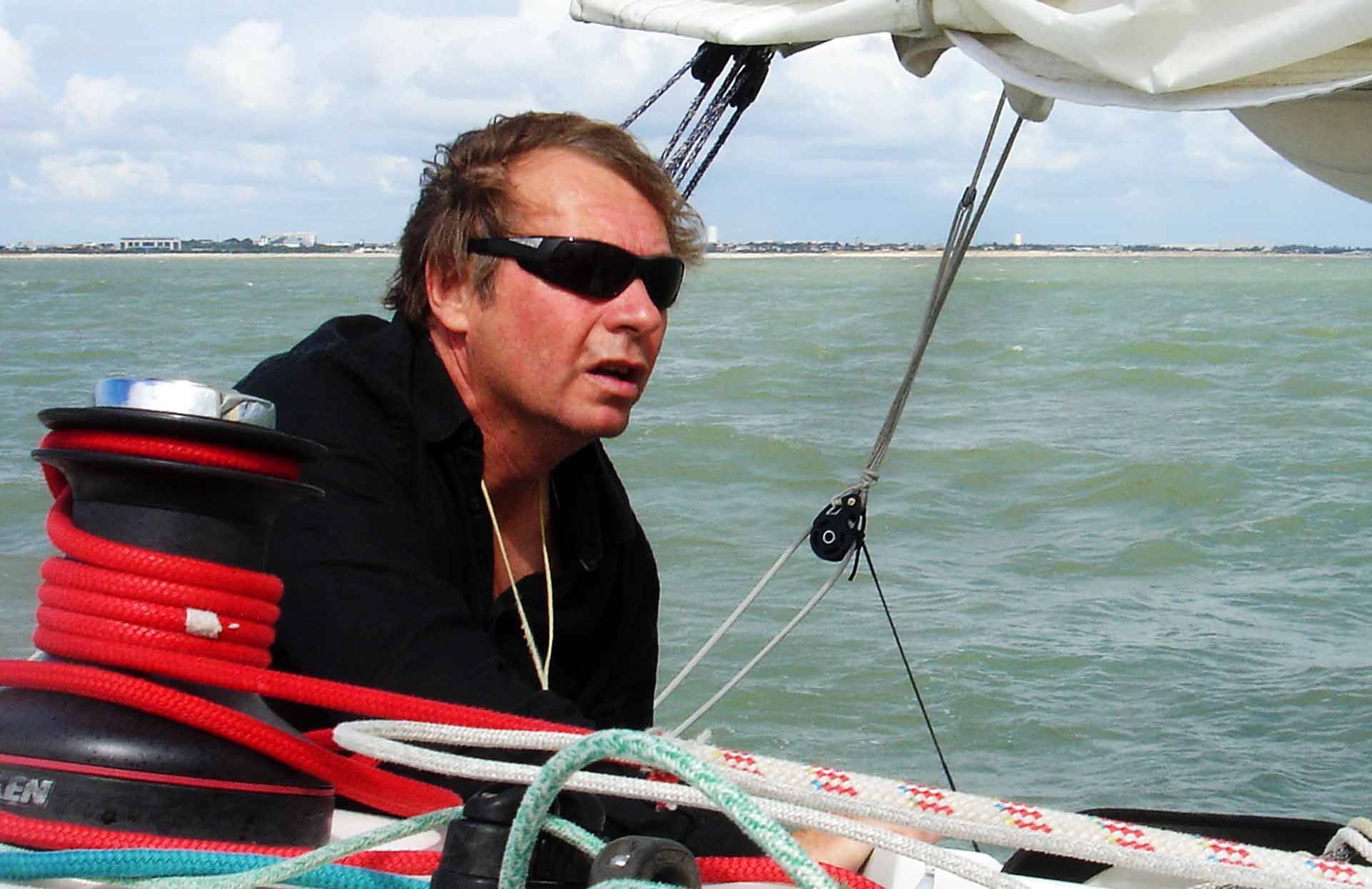
NFS.com: My last question would be this: What´s your most beloved class of boats or sailing yacht and why?
Charly: I really love the Mini 6.50 class because it delivers high-tech boats to a reasonable price. It´s simply accessible: A real laboratory and a very good tool for learning. I also love the Class 40 because of the ultra-light level of performance and the wonderful feeling of its power. And finally, the Open 60 – just because this is completely out of reach but makes you dream.
Marc: To be honest, I do like them all. My premise is to see constant progress on all the types of yachts with all their respective differences.
Thanks to Charly Fernbach of Pogo Structures and Naval Architect Marc Lombard for answering my questions. Here´s another article with Niels Jeppesen of X-Yachts and Magnus Rassy of Hallberg-Rassy on their Scandinavian approach to sailing and building yachts.
Pictures © by Jaques Vapillon, kind permission of Charly Fernbach and Marc Lombard

